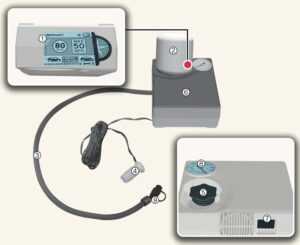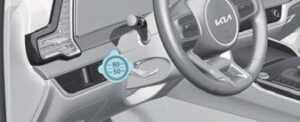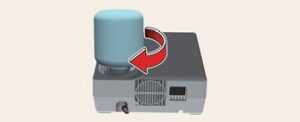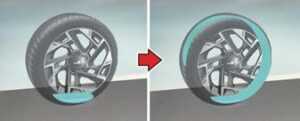2023 Kia Sportage Engine Overheats, Tire Monitoring System (With Tire Mobility Kit)
When it comes to performance and safety in cars, the 2023 Kia Sportage stands out as a car that not only has great power and speed but also is very reliable, even when problems arise like the engine overheating and tire monitoring. The design theory behind this car is based on a strong dedication to both performance and safety, going beyond normal limits to create a driving experience that is both thrilling and safe. When it comes to engine burning, the Sportage has a state-of-the-art cooling system that can handle even the roughest driving conditions and keep the engine from ever getting too hot. The Tire Monitoring System also keeps an eye on the tires and is ready to warn the driver if the pressure changes. This makes sure that the car has the best grip, gas mileage, and safety. The 2023 Kia Sportage sees the road as more than just a path to be driven on. It sees it as a place where dependability and performance meet, creating an unbeatable standard in the world of cars. Drivers can feel confident on the road, knowing that their car is built to perform well even in tough conditions.
2023 KIA SPORTAGE Specs, Price, Features, Mileage and Torque
If the engine overheats
If your temperature gauge indicates overheating, you experience a loss of power, or hear a loud pinging or knocking, the engine will probably be too hot.
If this happens, you should:
- Pull off the road and stop as soon as it is safe to do so.
- Shift the gear to P (Park) and set the parking brake.
- If the air conditioning is on, turn it off.
- If engine coolant is running out under the vehicle or steam is coming out from underneath the hood, stop the engine. Do not open the hood until the coolant has stopped running or the steaming has stopped.
- If there is no visible loss of engine coolant and no steam, leave the engine running and check to be sure the engine cooling fan is operating.
- If the fan is not running, turn the engine off.
- Check to see if the water pump drive belt is missing.
- If it is not missing, check to see that it is tight.
- If the drive belt seems to be satisfactory, check for coolant leaking from the radiator, hoses or under the vehicle. (If the air conditioning had been in use, it is normal for cold water to be draining from it when you stop.)
WARNING
Under the hood
While the engine is running, keep hair, hands and clothing away from moving parts, such as the fan and drive belts, to prevent injury.
- If the water pump drive belt is broken or engine coolant is leaking out, stop the engine immediately and call the nearest professional workshop for assistance. Call an authorized Kia dealer.
- If you cannot find the cause of the overheating, wait until the engine temperature has returned to normal. If the coolant has been lost, carefully add coolant to the reservoir to bring the fluid level in the reservoir up to the halfway mark.
- Proceed with caution, keeping alert for further signs of overheating. If overheating happens again, call a professional workshop for assistance. Call an authorized Kia dealer.
WARNING
Coolant reservoir cap
Do not remove the engine coolant reservoir cap when the engine is hot. This may result in coolant being blown out of the opening and cause serious burns.
CAUTION
- Serious loss of coolant indicates there is a leak in the cooling system and this should be checked as soon as possible. Have your vehicle checked by an authorized Kia dealer.
- When the engine overheats from low engine coolant, suddenly adding engine coolant may cause cracks in the engine. To prevent damage, add engine coolant slowly in small quantities.
Tire Pressure Monitoring System (TPMS)
The Kia Sportage 2023 Tire Pressure Monitoring System (TPMS) detects the pressure of the vehicle’s tires and displays it on the LCD display.

- Low tire pressure telltale/TPMS malfunction indicator
- Low tire pressure position telltale (Shown on the LCD display)
Kia Sportage 2023 Tire Pressure Indicator
- You can check the tire pressure in the assist mode on the cluster.
- Tire pressure is displayed 1 ~ 2 minutes later after driving.
- If tire pressure is not displayed when the vehicle is stopped, a “Drive to display” message displays. After driving, check the tire pressure.
- You can change the tire pressure unit in the user settings mode on the cluster.
NOTICE
- The tire pressure may change due to factors such as parking conditions, driving style, and altitude above sea level.
- The tire pressure shown on the dashboard may differ from the tire pressure measured by tire pressure gauge.
- Low tire pressure warning may sound when a tire’s pressure unit is equal or lower than nearby tires. This is a nor-mal occurrence, which is due to the change in tire pressure along with tire temperature.
Effective use of TPMS
WARNING
Over-inflation or under-inflation can reduce tire life, adversely affect vehicle handling, and lead to sudden tire failure that may cause loss of vehicle control resulting in an accident Each tire, including the spare (if pro-vided), should be checked monthly when cold and inflated to the inflation pressure recommended by the vehicle manufacturer on the vehicle placard or tire inflation pressure label. (If your vehicle has tires of a different size than the size indicated on the vehicle placard or tire inflation pressure label, you should determine the proper tire inflation pressure for those tires.) As an added safety feature, your vehicle has been equipped with a tire pressure for a Kia Sportage monitoring system (TPMS) that appears a low tire pressure telltale when one or more of your tires is significantly under-inflated. Accordingly, when the low tire pressure telltale appears, you should stop and check your tires as soon as possible, and inflate them to the proper pressure. Driving on a significantly under-inflated tire causes the tire to overheat and can lead to tire failure. Under-inflation also reduces fuel efficiency and tire tread life and may affect the vehicle’s handling and stopping ability. Please note that the TPMS is not a substitute for proper tire maintenance, and it is the driver’s responsibility to maintain correct tire pressure, even if under-inflation has not reached the level to trigger illumination of the TPMS low tire pressure telltale. Your vehicle has also been equipped with a TPMS malfunction indicator to indicate when the system is not operating properly. The TPMS malfunction indicator is combined with the low tire pressure telltale. When the system detects a malfunction, the telltale will flash for approximately one minute and then remain continuously appear. This sequence will continue upon subsequent vehicle start-ups as long as the malfunction exists. When the malfunction indicator appears, the system may not be able to detect or signal low tire pressure as intended. TPMS malfunctions may occur for a variety of reasons, including the installation of replacement or alternate tires or wheels on the vehicle that prevents the TPMS from functioning properly. Always check the TPMS malfunction tell-tale after replacing one or more tires or wheels on your vehicle to ensure that the replacement or alternate tires and wheels allow the TPMS to continue to function properly.
NOTICE
If any of the below happens, have the system checked by an authorized Kia dealer.
- The low tire pressure telltale/TPMS malfunction indicator does not appear for 3 seconds when the ENGINE START/STOP button is turned to the ON position or engine is running.
- The TPMS malfunction indicator remains appeared after blinking for approximately 1 minute.
- The Low tire pressure position telltale remains illuminated.
Low tire pressure telltale
When the TPMS warning indicators appear, one or more of your tires is significantly under-inflated.
A: Low tire pressure
If the telltale illuminates, immediately reduce your speed, avoid hard cornering and anticipate increased stopping distances. You should stop and check your tires as soon as possible.
Inflate the tires to the proper pressure as indicated on the vehicle’s placard or tire inflation pressure label located on the driver’s side centre pillar outer panel. If you cannot reach a service station or if the tire cannot hold the newly added air, replace the low-pressure tire with the spare tire. Then the TPMS malfunction indicator and the Low Tire Pressure telltale may turn on and illuminate after restarting and about 20 minutes of continuous driving before you have the low-pressure tire repaired and replaced on the vehicle. In winter or cold weather, the low tire pressure telltale may be illuminated if the tire pressure was adjusted to the recommended tire inflation pressure in warm weather. It does not mean your TPMS is malfunctioning because the decreased temperature leads to a proportional lowering of tire pressure. You should check the tire inflation pressure and adjust the tires to the recommended tire inflation pressure when driving your vehicle in the following conditions.
- from a warm area to a cold area
- from a cold area to a warm area
- the outside temperature is extremely
high or low
When filling tires with more air, conditions to turn off the low tire pressure tell-tale may not be met. This is because a tire inflator has a margin of error in performance. The low tire pressure telltale will be turned off if the tire pressure is above the recommended tire inflation pressure.
WARNING
Low-pressure damage
Do not drive on low-pressure tires. Significantly low tire pressure can cause the tires to overheat and fail, making the vehicle unstable, and resulting in increased braking distances and a loss of vehicle control.
2023 Kia Sportage Tire Pressure Monitoring System (TPMS) malfunction indicator
The low tire pressure telltale will illuminate after it blinks for approximately one minute when there is a problem with the TPMS. If the system is able to correctly detect an underinflation warning at the same time as system failure, it will illuminate both the TPMS malfunction and the low tire pressure position telltales. For example, if the Front Left sensor fails, the TPMS malfunction indicator appears, but if the Front Right, Rear Left, or Rear Right tire is underinflated, the low tire pressure position telltales may illuminate together with the TPMS malfunction indicator. Have the system checked by an authorized Kia dealer as soon as possible to determine the cause of the problem.
- The TPMS malfunction indicator may appear if the vehicle is moving around electric power supply cables or radio transmitters such as at police stations, government and public offices, broadcasting stations, military installations, airports, or transmitting towers, etc. This can interfere with the normal operation of the TPMS.
- The TPMS malfunction indicator may appear if the vehicle is equipped with snow chains or some personal electronic devices (such as a laptop computer, mobile charger, remote starter or navigation) are being used in the vehicle. This can interfere with the normal operation of the TPMS.
Tire replacement with TPMS
If you have a flat tire, the Low Tire Pressure telltale will come on. Have the flat tire repaired by an authorized Kia dealer as soon as possible or replace the flat tire with a spare tire.
CAUTION
Repair Agents
Never use a puncture-repairing agent not approved by Kia to repair and/or inflate a low-pressure tire. The sealant that is not approved by Kia may damage the tire pressure sensor. Each wheel is equipped with a tire pressure sensor mounted inside the tire behind the valve stem. You must use TPMS-specific wheels. Always have your tires serviced by an authorized Kia dealer. Even if you replace the low-pressure tire with the spare tire, the Low Tire Pressure telltale will remain on until the low pressure tire is repaired and placed on the vehicle.
After you replace the low-pressure tire with the spare tire, the TPMS malfunction indicator may appear after a few minutes. This is because the TPMS sensor mounted on the spare wheel is not yet activated. Once the low-pressure tire is inflated again to the recommended pressure and installed on the vehicle or the TPMS sensor mounted on the replaced spare wheel is initiated by a professional work-shop, the TPMS malfunction indicator and the low tire pressure telltale will turn off within a few minutes of driving.
If the indicator has not disappeared after a few minutes of driving, please visit an authorized Kia dealer. If an original mounted tire is replaced with the spare tire, the TPMS sensor on the replaced spare wheel should be initiated and the TPMS sensor on the original mounted wheel should be deactivated. If the TPMS sensor on the original mounted wheel located in the spare tire carrier still activates, the Tire Pressure Monitoring System may not operate properly. Have the tire with TPMS serviced or replaced by an authorized Kia dealer?
You may not be able to identify a low tire by simply looking at it. Always use a good quality tire pressure gauge to measure the tire’s inflation pressure. Please note that a tire that is hot (from being driven) will have a higher pressure measurement than a tire that is cold (from sitting stationary for at least 3 hours and driving less than 1 mile (1.6 km) during that 3 hour period). Allow the tire to cool before measuring the inflation pressure. Always be sure the tire is cold before inflating to the recommended pressure.
A cold tire means the vehicle has been sitting for 3 hours and driven for less than 1 mile (1.6 km) in that 3-hour period. Never use tire sealant if your vehicle is equipped with a TPMS. The liquid seal-ant can damage the tire pressure sensors.
- The TPMS cannot alert you to severe and sudden tire damage caused by external factors such as nails or road debris.
- If you feel any vehicle instability, immediately take your foot off the accelerator, apply the brakes gradually and with light force, and slowly move to a safe position off the road.
NOTICE
Protecting TPMS
Tampering with, modifying, or disabling the Tire Pressure Monitoring System (TPMS) components may interfere with the system’s ability to warn the driver of low tire pressure conditions and/or TPMS malfunctions. Tampering with, modifying, or disabling the Tire Pressure Monitoring System (TPMS) components may void the warranty for that portion of the vehicle.
This device complies with Part 15 of the FCC rules.
Operation is subject to the following three conditions:
- This device may not cause harmful interference.
- This device must accept any interference received, including interference that may cause undesired operation.
- Changes or modifications not expressly approved by the party responsible for compliance could void the user’s authority to operate the device.
2023 KIA SPORTAGE Specs, Price, Features, Mileage and Torque
If you have a flat tire with a tire mobility kit
For safe operation, carefully read and follow the instructions in this manual before use.

- Compressor
- Sealant bottle
The Tire Mobility Kit is a temporary fix to the tire and have your vehicle inspected by an authorized Kia dealer.
CAUTION
One sealant for one tire
When two or more tires are flat, do not use the tire mobility kit because the supported one sealant of Tire Mobility Kit is only used for one flat tire.
WARNING
Do not use the Tire Mobility Kit to repair punctures in the tire walls. This can result in an accident due to tire failure.
WARNING
Have your tire repaired as soon as possible. The tire may lose air pressure at any time after inflating with the Tire Mobility Kit.
Introduction
With the Tire Mobility Kit you stay mobile even after experiencing a tire puncture. The system of compressor and sealing compound effectively and comfortably seals most punctures in a passenger car tire caused by nails or similar objects and reflates the tire. After you ensure that the tire is properly sealed you can drive cautiously on the tire (distance up to 120 miles (200 km)) at a max. speed of 50 mph (80 km/h) in order to reach a service station or tire dealer to have the tire replaced. It is possible that some tires, especially with larger punctures or damage to the sidewall, cannot be sealed completely. Air pressure loss in the tire may adversely affect tire performance. For this reason, you should avoid abrupt steering or other driving manoeuvres, especially if the vehicle is heavily loaded or if a trailer is in use. The Tire Mobility Kit is not designed or intended as a permanent tire repair method and is to be used for one tire only. This instruction shows you step by step how to temporarily seal the puncture simply and reliably.
WARNING
Do not use the TMK if a tire is severely damaged by driving run flat or with insufficient air pressure. Only punctured areas located within the tread region of the tire can be sealed using the TMK.
Components of the Tire Mobility Kit

- Speed-restriction label
- Sealant bottle and label with speed restriction
- Filling hose from sealant bottle to wheel
- Connectors and cable for the power outlet direct connection
- Holder for the sealant bottle
- Compressor
- ON/OFF switch
- Pressure gauge for displaying the tire inflation pressure
- Valve for reducing the tire inflation pressure
* Connectors, cable and connection hose are stored in the compressor housing.
* Strictly follow the specified sequence, otherwise the sealant may escape under high pressure.
WARNING
Expired sealant
Do not use the Tire sealant after the sealant has expired (i.e. past the expiration date on the sealant container). This can increase the risk of tire failure.
WARNING
Sealant
- Keep out of reach of children.
- Avoid contact with eyes.
- Do not swallow.
Using the Tire Mobility Kit
CAUTION
Detach the speed restriction label from the sealant bottle, and place it in a highly visible place inside the vehicle such as on the steering wheel to remind the driver not to drive too fast.

- Shake the sealant bottle.

- Remove the cap of the sealant bottle and screw the connection hose onto the connector of the sealant bottle.

- Ensure that valve on the compressor is locked.

- Unscrew the valve cap from the valve of the defective tire and screw the filling hose of the sealant bottle onto the tire valve.

CAUTION
Securely install the sealant filling hose on the valve. If not, the sealant may flow backwards, possibly clogging the filling hose. - Ensure that the compressor is switched off, position 0.
- Connect between the compressor and the vehicle power outlet using the cable and connectors.

- Make the ENGINE START/STOP but-ton position on or the ignition switch position on.
- Switch on the compressor and let it run for approximately 5 ~ 7 minutes to fill the sealant up to proper pressure. The inflation pressure of the tire after filling is unimportant and will be checked/corrected later. Be careful not to overinflate the tire and stay away from the tire when filling it. When the tire and wheel are damaged, do not use Tire Mobility Kit for your safety.
WARNING
If the 2023 Kia Sportage tire pressure is below 26psi(180kPa), do not drive the vehicle. The tire may cause an accident. - Switch off the compressor.
- Detach the sealant filling hoses from the sealant bottle connector and from the tire valve. After using, leave the sealant bottle and the compressor attached together.
Return the TMK to its storage location in the vehicle.
WARNING
Carbon monoxide
Do not leave your vehicle running in a poorly ventilated area for extended periods of time. Carbon monoxide poisoning and suffocation can occur.
Distributing the sealant

- Immediately drive approximately 4 ~ 6 miles (7 ~ 10 km or, about 10min) to evenly distribute the sealant in the tire.
CAUTION
Do not exceed a speed of 50 mph (80 km/h). If possible, do not fall below a speed of 12 mph (20 km/h). While driving, if you experience any unusual vibration, ride disturbance or noise, reduce your speed and drive with caution until you can safely pull off of the side of the road. Call for roadside service or towing. When you use the Tire Mobility Kit, the wheel may be stained by sealant. Therefore, remove the wheel stained by sealant and have the vehicle inspected at an authorized Kia dealer.
Checking the tire inflation pressure
- After driving approximately 4 ~ 6 miles (7 ~ 10 km or about 10 min), stop at a safety location.
- Connect the filling hose of the compressor directly to the tire valve.

- Connect between the compressor and the vehicle power outlet using the cable and connectors.
- Adjust the tire inflation pressure to the recommended tire inflation.
With the ignition switched on, proceed as follows.
- To increase the inflation pressure:
Switch on the compressor. To check the current inflation pressure setting, briefly switch off the compressor. - To reduce the inflation pressure: Turn the valve on the compressor.
WARNING
Do not let the compressor run for more than 10 minutes, otherwise, the device will overheat and may be damaged.
CAUTION
If the inflation pressure is not maintained, drive the vehicle a second time, Then repeat steps 1 to 4. Use of the TMK may be ineffectual for tire damage larger than approximately 0.16 of an inch (4 mm). We recommend that you please contact the nearest Kia dealership if the tire cannot be made roadworthy with the Tire Mobility Kit.
WARNING
The tire inflation pressure must be at least 180 kPa (26 psi). If it is not, do not continue driving. Call for road side service or towing.
NOTICE
When reinstalling the repaired or replaced tire and wheel on the vehicle, tighten the wheel lug nut to 79 ~ 94 lbf·ft (11 ~ 13 kgf·m).
Notes on the safe use of the Tire Mobility Kit
- Park your car at the side of the road so that you can work with the TMK away from moving traffic. Place your warning triangle in a prominent place to make passing vehicles aware of your location.
- To be sure your vehicle will not move, even when you’re on fairly level ground, always set your parking brake.
- Only use the TMK for sealing/inflation of passenger car tires. Do not use on motorcycles, bicycles or any other type of tires.
- Do not remove any foreign objects- such as nails or screws -that have penetrated the tire.
- Before using the TMK, read the pre-cautionary advice printed on the seal-ant bottle!
- Provided the car is outdoors, leave the engine running. Otherwise operating the compressor may eventually drain the car battery.
- Never leave the TMK unattended while it is being used.
- Do not leave the compressor running for more than 10 min. at a time or it may overheat.
- Do not use the TMK if the ambient temperature is below -22°F (-30°C).
- When the tire and wheel are damaged, do not use Tire Mobility Kit for your safety.
Technical Data
- System voltage: DC 12 V
- Working voltage: DC 12 V
- Amperage rating: max. 15 A
- Suitable for use at temperatures: -22 to 158 °F (-30 to 70 °C)
- Max. working pressure: 101 psi (7 bar)
- Size
- Compressor: 150 x 130 x 60 mm (5.9 x 5.1 x 2.4 in.)
- Sealant bottle: 115.3 x 87.3 ø mm (4.5 x 3.4 ø in.)
- Compressor weight: 620 g (1.36 lbs)
- Sealant volume: 400 ml (24.4 cu. in.)
* Sealant and spare parts can be obtained and replaced at an authorized vehicle or tire dealer. Empty seal-ant bottles may be disposed of at home. Liquid residue from the sealant should be disposed of by your vehicle or tire dealer or in accordance with local waste disposal regulations
FAQ
A: If the engine of your Kia Sportage 2023 overheats, it is important to take immediate action. Safely pull over to a safe location and turn off the engine. Allow it to cool down before attempting to open the hood. Check the coolant level and add coolant if necessary. If the problem persists, have the vehicle inspected by a qualified mechanic or contact a Kia dealership for assistance.
A: To prevent engine overheating in your Kia Sportage 2023, ensure that the coolant level is at the proper level by regularly checking it. Follow the manufacturer’s recommended maintenance schedule for coolant flushes and radiator inspections. Additionally, avoid driving with a heavy load in extreme heat conditions and ensure that the cooling system is in good working order.
A: Yes, the Kia Sportage 2023 is equipped with a Tire Pressure Monitoring System (TPMS). This system monitors the tire pressure and alerts the driver if any of the tires are significantly underinflated. If the TPMS warning light illuminates on the instrument panel, it is recommended to check the tire pressure and inflate the tires to the recommended levels.
A: The TPMS in the Kia Sportage 2023 uses sensors located in each tire to monitor the tire pressure. These sensors send signals to the vehicle’s onboard computer, which then displays the tire pressure information on the instrument cluster. If the tire pressure drops below a certain threshold, the TPMS warning light will illuminate, indicating the need for tire inflation or inspection.
A: If the TPMS warning light illuminates in your Kia Sportage 2023, it indicates that one or more tires may be underinflated. Check the tire pressure of all the tires, including the spare tire if applicable, and inflate them to the recommended levels. If the light remains illuminated even after proper inflation, there may be an issue with the TPMS sensors, and it is recommended to have the system inspected by a qualified mechanic or Kia dealership.
A: Yes, the Kia Sportage 2023 may come with a tire mobility kit for fixing flat tires. This kit typically includes a sealant and an air compressor, allowing you to temporarily repair small punctures and reinflate the tire. The tire mobility kit can provide a temporary solution to get you to a service center for proper tire repair or replacement.
A: If you experience a flat tire in your Kia Sportage 2023 and have a tire mobility kit, follow the instructions provided in the kit. Generally, you would connect the compressor to the tire valve, inject the sealant into the tire, and then use the compressor to inflate the tire to the recommended pressure. Refer to the specific instructions in the tire mobility kit and consult the vehicle’s manual for detailed guidance.
A: The tire mobility kit in the Kia Sportage 2023 is designed to address minor punctures or leaks. It may not be effective for more significant tire damage, such as sidew
A: The tire mobility kit is intended for temporary repairs, and the driving distance should be limited. It is recommended to drive cautiously and at moderate speeds for a short distance (typically up to 50 miles) after using the tire mobility kit. It is important to have the tire professionally inspected and repaired or replaced as soon as possible.
A: The tire mobility kit is typically designed for a single use or for repairing one tire at a time. After using the kit, it is important to replace the sealant and ensure that the kit is replenished so that it is ready for future use.
A: The tire mobility kit is generally not suitable for repairing sidewall damage. It is primarily designed to address small punctures in the tire tread area. If your tire has sidewall damage, it is recommended to replace the tire or consult a professional tire service for proper assessment and repair.
A: To help prevent flat tires in your Kia Sportage 2023, regularly check the tire pressure and ensure it is at the recommended levels. Avoid driving over potholes, curbs, or other road hazards. Inspect the tires for any signs of damage, such as cuts or bulges, and have them repaired or replaced as needed. Additionally, practicing defensive driving and avoiding rough road conditions can help minimize the risk of flat tires.
A: If you experience a flat tire and do not have a tire mobility kit, the best course of action is to pull over to a safe location and contact roadside assistance or a professional towing service. They can provide assistance in changing the tire or transporting the vehicle to a tire service center for repair or replacement.
A: The availability of a temporary spare tire may depend on the specific trim level and options chosen for the Kia Sportage 2023. If your vehicle is equipped with a temporary spare tire, it can be used as a replacement for a flat tire. However, it is important to note that temporary spare tires are not intended for long-term use and have speed and distance limitations. Refer to the vehicle’s manual for specific instructions on using the temporary spare tire.
A: It is recommended to check the tire pressure in your Kia Sportage 2023 at least once a month. Additionally, it is a good practice to inspect the tires visually for any signs of damage or wear during this check. Regular tire maintenance helps ensure optimal performance, fuel efficiency, and safety.
Useful Link
View Full User Guide: Kia Sportage 2023 User Guide
Download Manuals: https://owners.kia.com/content/owners/en/manuals.html
2023 KIA SPORTAGE Specs, Price, Features, Mileage and Torque


